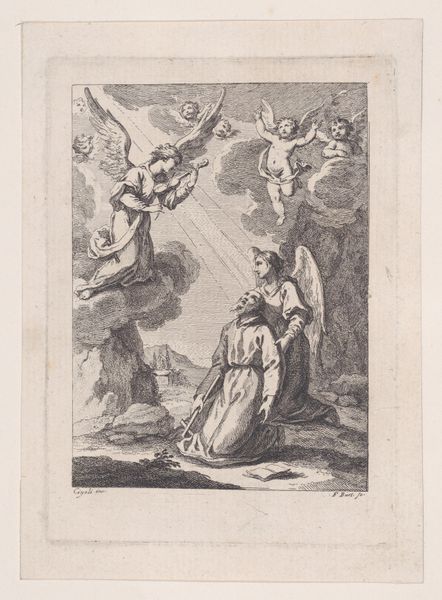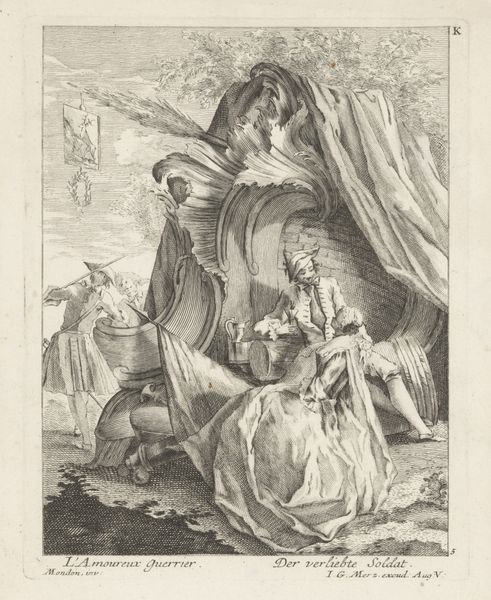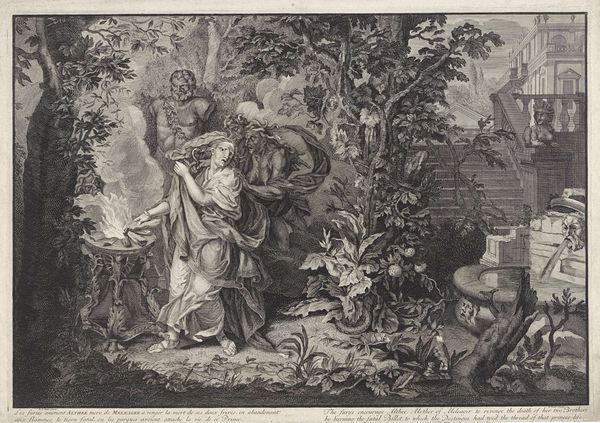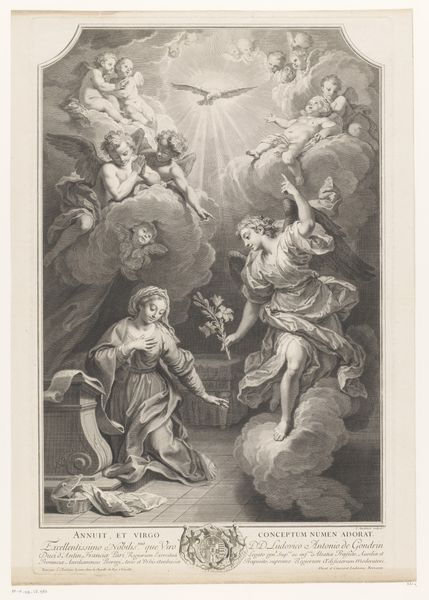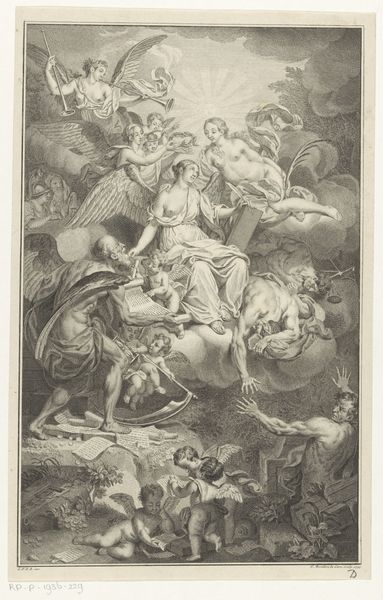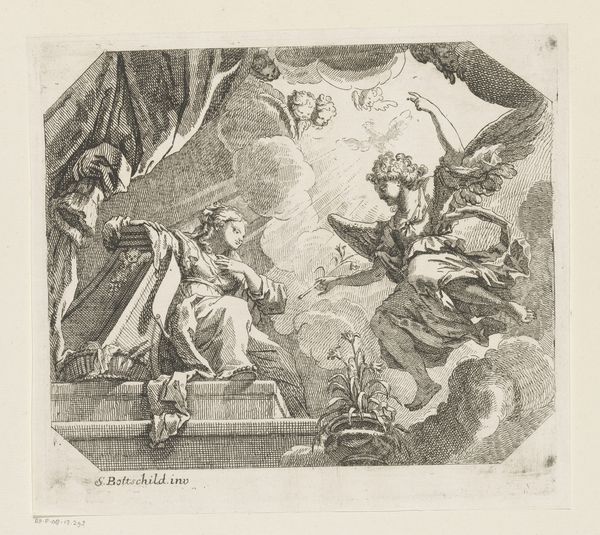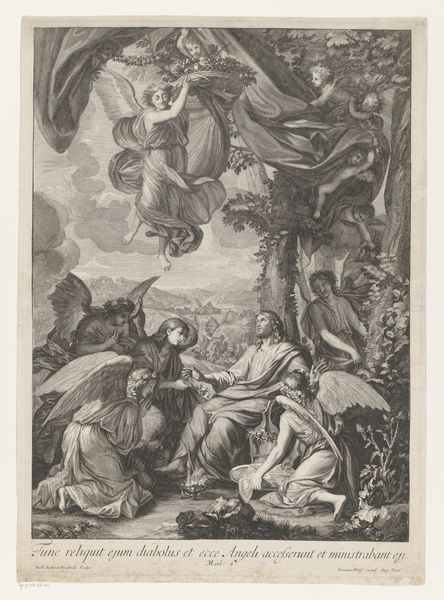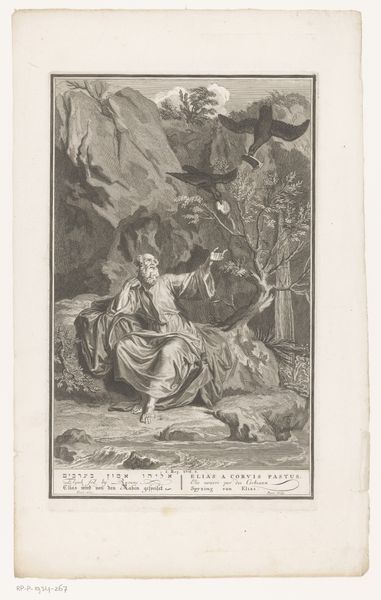
engraving
#
baroque
#
old engraving style
#
figuration
#
history-painting
#
engraving
Dimensions: height 332 mm, width 237 mm
Copyright: Rijks Museum: Open Domain
Editor: This is "Christus in de hof van Gethsemane," made between 1690 and 1738 by Nicolas Chasteau, an engraving held at the Rijksmuseum. It’s very striking with the contrast between light and shadow. What stands out to you in this scene? Curator: Immediately, I am drawn to the visual vocabulary used to convey Christ's emotional state. Note the chalice presented by the angel – a potent symbol. In psychological terms, it reflects an offering of acceptance, but acceptance of what? Editor: You mean acceptance of his fate? Curator: Precisely. The angels floating above and around him offering this cup, this acceptance, represents that sacrifice. Notice also the Latin inscription at the bottom of the work. The serpent amongst the cloud below also hints to both danger and deception. These are traditional elements associated with Christian symbolism for centuries, reflecting humanity’s long struggle between earthly life and redemption. What lasting impact might such imagery have, do you think? Editor: It would make the themes very resonant for audiences at that time. It provides a kind of visual shortcut, doesn't it, embedding cultural values within a piece that are easily recognisable? Curator: Exactly. The engraving continues a legacy of meaning that is reinforced and made manifest by Chasteau’s choices here. It also prompts the viewer to grapple with difficult and conflicting feelings. Editor: It's interesting to see how visual symbols communicate on such a deep cultural level, echoing across time and belief. Curator: Indeed, that's the powerful legacy of imagery. Understanding them enables us to better grasp and discuss the past, as well as more thoroughly appreciate these visual expressions.
Comments
No comments
Be the first to comment and join the conversation on the ultimate creative platform.


